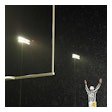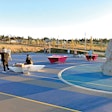Copyright 2018 The Buffalo News
All Rights Reserved
The Buffalo News (New York)
It was a proposal, they thought, that couldn't be beat:
Build a $6.6 million synthetic turf field for soccer, field hockey, lacrosse and football, as well as an eight-lane track, all for an extra $6.24 a year in taxes for the owner of a $200,000 home.
But Iroquois Central voters turned it down Jan. 10, as well as a companion proposition for a $4.43 million synthetic turf field for baseball and softball.
They are some of the only synthetic turf fields that have been defeated at school ballot boxes in Western New York. If propositions fail the first time, they usually pass on the second vote, said Rick Krysztof, vice president of sales for A-Turf, which installs most of the artificial grass fields in Western New York.
"I'd say about 75 percent of them pass across the state," he said, adding that the rate was more like 25 percent 15 years ago.
Grass fields now are in the minority at schools in Erie and Niagara counties. Schools may be past the "keeping up with the Joneses" stage: about 73 percent of high schools in Section VI have synthetic turf fields or are looking to install them.
The investment is millions of dollars, and some taxpayers would rather see that money spent in the schools. But others argue synthetic turf fields don't just benefit the elite "jocks."
Most of these fields can accommodate a number of girls and boys sports.
But more important in Western New York, when a rainy October hits, or before snow melts in the spring, multiple teams can practice and play on synthetic turf fields without worrying about damaging the grass for the weekly football game. And physical education classes can be held outside on artificial grass fields when natural fields would be muddy.
Teens practicing baseball in a cramped gym led to John Mariacher's involvement in leading the charge for a turf field at Iroquois. He said a friend's son broke his orbital bone after he got hit in the eye while practicing inside.
It's not a sports issue to him, but one of safety.
But it's also a question of money.
Clarence Wigler, a farmer who worked 10 years for the district as a laborer, said he never did get a newsletter from the school about the Iroquois vote, but he didn't need the details. He voted against the propositions.
"Take care of what you've got first," he said from his cow barn. "We do not need new athletic fields. My taxes are high enough."
Matthew Foss, who sells real estate, said he wanted to vote for the project, but the information he got on it came late. He saw something on Facebook a week before the vote, and he got a district newsletter the day before the vote.
"There wasn't enough time for people to process it," said Foss, who did not go to the polls. He said Thursday he would vote for it if the propositions were put back on the ballot.
Supporters of the new multisport field and track said this was and remains a good deal for Iroquois taxpayers, because of money that has been donated and generous state aid. They hope to bring it back for another vote in May.
Mariacher, who has worked on the proposal for four years, said he thought many people did not know what the project entailed, or how much it would cost.
"I had friends come up to me afterward and said I voted 'no,' " he said.
Iroquois voters approved a synthetic turf field in 2016, with the stipulation that enough money be raised so that taxes would not increase due to the project. But the funds were not raised by the deadline. Even if there is no new field, the district will have to replace the bleachers and the track at the existing field, and supporters said that money could be spent at a brand new field.
Funding for the $6.6 million multipurpose field and track, which would be built on the west side of Girdle Road across from the high school, included $4.51 million in state aid, $590,000 from the district's capital reserve fund, $600,000 in donations already in hand and $900,000 in local taxes.
The $4.43 million synthetic turf baseball/softball field, which would have been built only if the larger field was approved, would have been funded by $1.06 million in state aid and $3.37 million in local taxes. It was placed on the ballot by the School Board, and some think the two fields with a combined price tag of $11 million were too much for voters.
"It was definitely confusing to people, and it aggravated a lot of people," Mariacher said. "They thought we were asking for too much."
Others thought their taxes would jump thousands of dollars, he said. He said he heard from people who thought the state aid was not guaranteed, or could be switched to buy textbooks and other classroom items. But the building aid was spelled out and could not be transferred to the classroom.
"That money is 100 percent guaranteed. If that money goes away, the proposal is dead," Mariacher said of state aid.
The owner of a $200,000 home would pay $6.24 more each year in taxes for 15 years for the new multipurpose field, or $93.60. The baseball/softball field would add $23.38 per year ($350.70), and both would have cost $29.62 a year ($444.30), according to the district.
The impact on property taxes would have been less for the multipurpose field than the baseball field because the district would receive a higher percentage of state aid for the multipurpose field and would also use capital reserve funds and community fundraising.
"When all this started, the bragging point was no taxpayer money involved," said Wigler, who is against the project.
Raising more money is in the mix.
"We're still soliciting donations for it," Mariacher said. "We still believe in it. We still feel it's an absolute necessity, not a luxury."
Read More of Today's AB Headlines
Subscribe to Our Daily E-Newsletter
Terms and Conditions Privacy Policy































